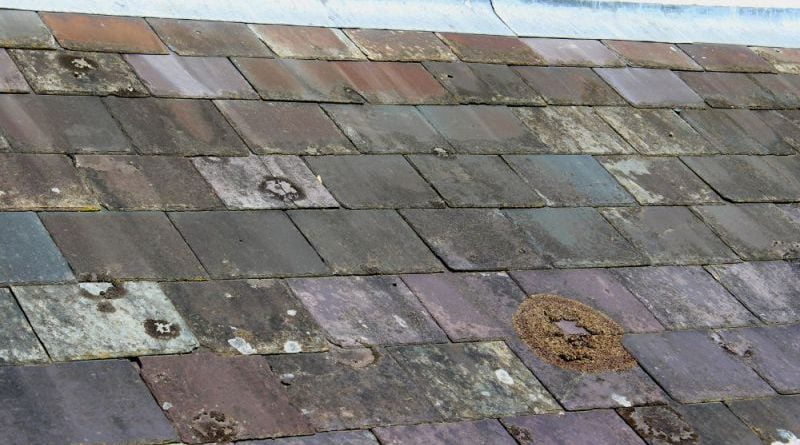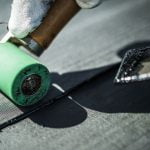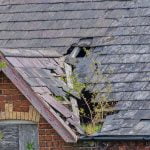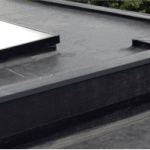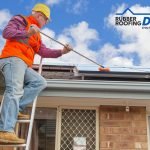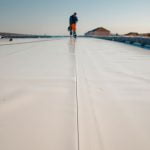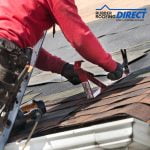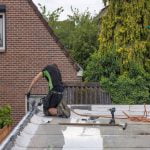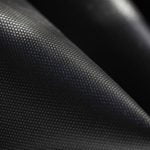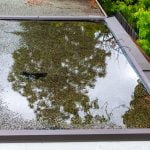Everything You Need To Know About Lead In Roofing
Lead is used in many roofing projects, both commercial and domestic, from whole roof coverings to porches, turrets, and waterproofing details like flashings, valleys, and gutters. Typically used to cover the gaps and joins in your roof, lead roof flashing provides sealant qualities that ensure your home is watertight. A durable and long-lasting choice, lead roof flashing can last up to three times longer than other materials. Let’s explore together how it is used in typical roofing projects and in conjunction with EPDM.
Applications of lead in roofing
- Lead flashing: Used to seal joints and protect the roof from water ingress, typically installed in common areas like chimneys, skylights, valleys, dormers, vent pipes and roof edges.
- Lead valleys: These are used when two roof slopes meet to direct water away from the roof. Lead sheets are laid in the valley area, shaped, and secured with nails or clips. The edges are then dressed in the adjoining roof material to ensure seamless integration.
- Lead gutters and downpipes: Lead sheets are used to form gutters and downpipes, especially in historic buildings. They are shaped into gutter profiles, soldered, and welded to create long, watertight sections.
- Lead capping and flashings for parapet walls: Protect the top of parapet walls and other exposed edges from water ingress.
Lead in roofing will require:
- Regular inspections: To check for any signs of damage, corrosion or wear.
- Cleaning: To remove debris and dirt and prevent staining and corrosion.
- Re–sealing: Reapplying sealant to joints and seams to maintain a watertight seal.
- Preventing contact: Prevent galvanic corrosion by ensuring that lead does not come into contact with other metals, such as zinc or aluminum.
When working with lead, you’ll typically need the following tools:
- Lead sheet rolls
- Lead welding equipment
- Lead sealant
- Fixings like lead clips or nails
- Underlay or lead-lining paper
- Other tools include hammers, snips, measuring tape, roller, soft mallet, gloves, and safety glasses.
When working with lead and EPDM
- EPDM membrane
- Lead flashing
- EPDM adhesive or primer
- Sealant (compatible with EPDM and lead)
- Scissors and utility knife
- Wire brush or sandpaper
- Clean cloth
- Measuring tape
- Roller or brush for applying adhesive
- Protective gloves
Visit our shop to find all the materials and tools you’ll need to work with EPDM and lead.
You’ll also need to be aware of any restrictions the local authority implements that could restrict your tile choice. For example, planning requirements and restrictions might require you to pick a type of tile that blends in with the aesthetics of your neighbourhood. In some instances, other modern types might require specific approval based on environmental concerns.
When replacing a roof, the costs are not always cheap. So, whether you’re ready to spend without limits or to work affordably as possible, this is another easy way to narrow down your search for the best roof tile. When finding a roof tile best suited to your price range, you’ll also have to bear in mind the additional costs, which include installation, transportation, maintenance and the upfront cost for the tiles.
Is there an alternative for using lead altogether?
While there are advantages to using lead in roofing, like durability and weather resistance, the limitations and disadvantages of lead are starting to make it unpopular in common roofing projects.
For example, other durable, strong, and malleable materials can boast even better benefits than lead and do not have disadvantages like toxicity.
Lead is a toxic metal; prolonged exposure can pose serious health risks and environmental impacts. If not properly managed, it can contaminate soil and water. Additionally, lead has a higher initial cost compared to alternatives.
You don’t always need to use lead when working with EPDM rubber flat roofs.
For example, one product, Rooftec Flex, is an EPDM-based lead replacement that acts the same way as traditional lead and can be treated as such.
Boasting incredible additional advantages like UV and ozone resistance, Rooftec Flex is super lightweight, non-toxic, incredibly malleable, and quicker and easier to install.

